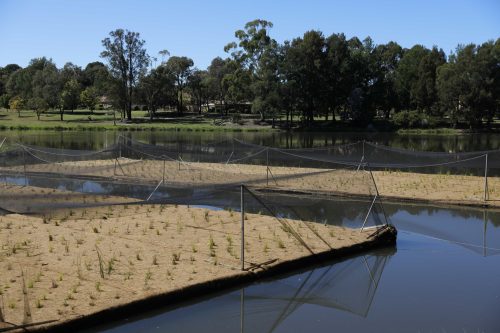
LAKE Tuggeranong is at its lowest water-health rating to date, according to a new report from ACT Waterwatch.
The Catchment Health Indicator Project’s (CHIP) annual report, based on more than 1700 water quality surveys conducted by Waterwatch volunteers, also found that Lake Tuggeranong had the worst levels of phosphorus of all the lakes in the ACT.
“A combination of degraded assessments has earned this water body its worst CHIP score yet recorded,” the report reads.
“High inflows from above average rain washed in pollutants from the surrounding suburbs. Very high concentrations of nitrates (up to 10mg/L) were measured by Waterwatcher Sijia coming out the stormwater systems at the northern end of the lake.”
The findings come as Water Minister Shane Rattenbury in the Legislative Assembly this week pointed to the report to prove the ACT’s Water Sensitive Urban Design code had achieved its objectives.
Despite the ACT government installing new mobile wetlands in March this year to combat the spread of blue-green algae in Lake Tuggeranong, the report found algae was appearing in blooms around the town centre from Summer until April.
Carrying native plants, the floating barges are operating as part of a two-year trial with an aim, Mr Rattenbury said, to reduce the likelihood that algae will bloom in warmer weather.
Shadow Minister for Water Nicole Lawder said that although millions have been spent on improving the lake’s water quality there were no real results to show for it.
“If the government is serious about improving water quality, it will start actively measuring and analysing the work they are doing to see how and where things can be improved,” said Ms Lawder.
“The CHIP reports findings of Lake Tuggeranong were a stark reminder of how bad the water quality issues in the ACT are. This government fails to engage in proper debate about how things can be improved, and Lake Tuggeranong is paying the price.
“This clearly shows that the Labor-Greens Government are only interested in appearing as though they are improving water quality in our lakes and waterways, rather than actually delivering results.”
Despite the poor results for Lake Tuggeranong, the report did find that two years of consistent rain has seen general improvements across the upper Murrumbidgee.
Out out of 96 report cards, the report found seven reaches are in “excellent” health, 42 were “good”, 45 presented as “fair” and two, including Lake Tuggeranong, received a “poor” rating.
Read the full report here.
Who can be trusted?
In a world of spin and confusion, there’s never been a more important time to support independent journalism in Canberra.
If you trust our work online and want to enforce the power of independent voices, I invite you to make a small contribution.
Every dollar of support is invested back into our journalism to help keep citynews.com.au strong and free.
Thank you,
Ian Meikle, editor









Leave a Reply